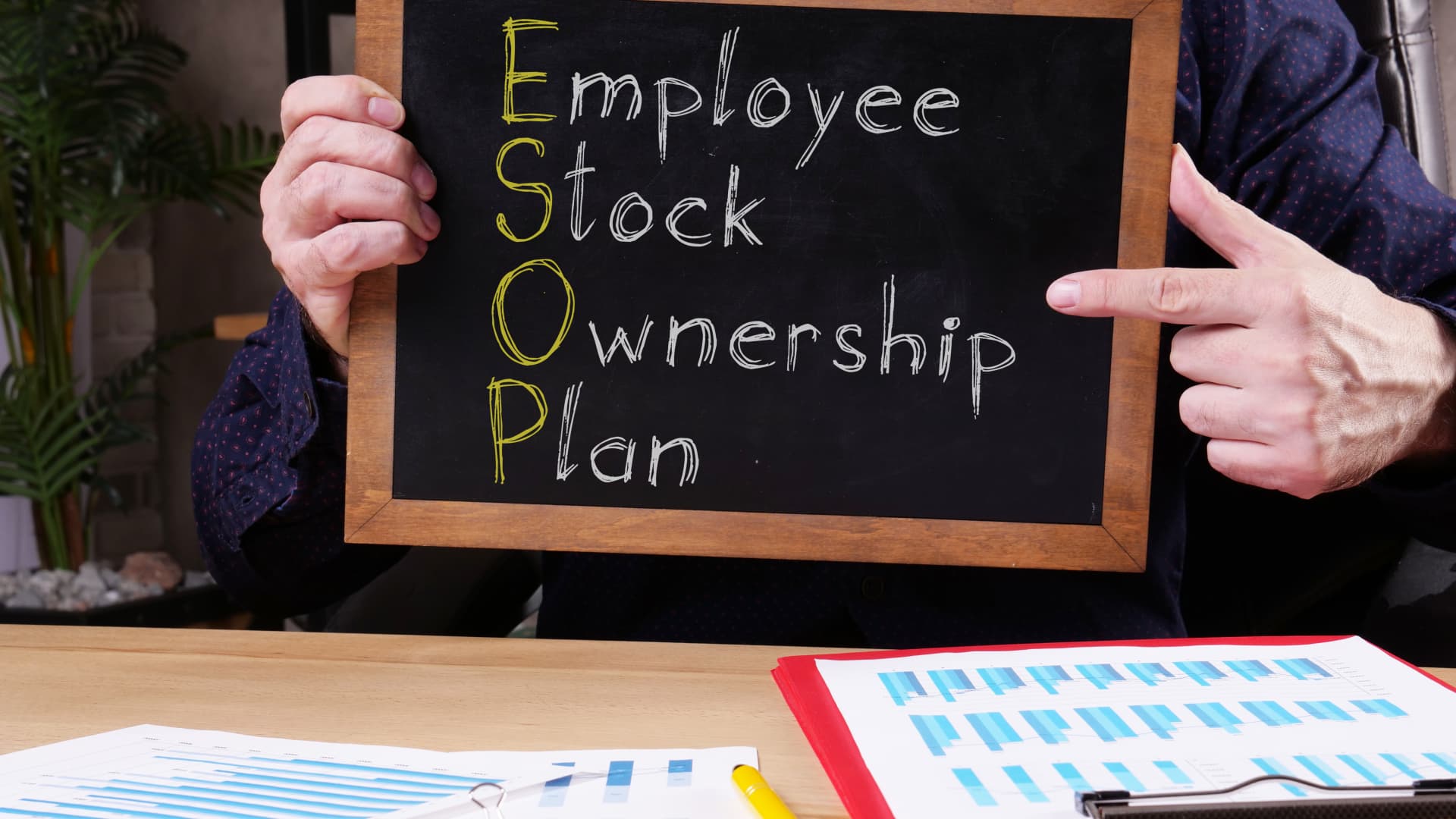
In a challenging business environment, companies are looking for any competitive advantage they can get. Employee stock ownership plans (ESOPs) could be one way to gain an edge.
“There is massive new interest in employee ownership from prospective employees, especially younger workers, and from government and political leaders,” said Jim Bonham, president and CEO of The ESOP Association, which educates people about ESOPs and advocates for employee ownership.
An ESOP is a benefit plan that gives employees an ownership interest in their company in the form of stock shares. Companies and employee participants can enjoy tax benefits from these plans, and employers can use them as a financial strategy to better align worker and employer interests.
“Globally, the concept of employee ownership as a response to wealth and income inequality is reverberating across economies,” Bonham said.
According to the National Center for Employee Ownership, as of 2020 — the most recent year for which comprehensive data is available — 225 new ESOPs were created, bringing the total to approximately 6,467 ESOPs in the United States alone, holding total assets of over $1.6 trillion and covering close to 14 million participants.
Better company loyalty
Companies that offer ESOPs tend to have higher customer loyalty, Bonham said. “I firmly believe ESOPs produce higher quality products and provide better service, because the employees know how much customer service and quality matter to their bottom line,” he said. “The company reputation is their reputation, and it sticks culturally because it is true.”
Most ESOP companies go out of their way to include “employee owned” in their marketing and branding, “because it is communicating to customers the values of high quality, good citizenship and customer service,” Bonham said.
Offering ESOPs can also make companies more attractive from a hiring perspective.
“Most ESOPs are well known in their communities for being among the best employers around,” Bonham said. “The benefits and ownership interest for every employee become well known and extremely attractive to prospective employees. ESOPs retain their employees at significantly higher rates compared to traditional firms. These low turnover rates translate directly into lower operating costs.”
Tax savings
Congress has granted a number of tax incentives to spur the adoption of ESOPs, which have brought more attention to these plans as an attractive, tax-efficient tool for businesses with tax advantages for employees as well.
“During the last few years, we’ve seen more companies using ESOPs as a powerful compensation strategy, particularly by start-ups, to attract and retain top talent, foster employee engagement and drive long-term growth,” said Cheryl Collins, vice president of people at food products provider Bob’s Red Mill, a 100% employee-owned company.
“If properly structured, an ESOP can become a very successful vehicle for highly diversified businesses and can operate without the burden of corporate taxes,” Bonham said. “Employees gain the benefit of sharing in the value they create without putting any cash into the system themselves. This results in dramatically higher retirement savings and wealth. And business owners who sell to their employees through an ESOP can benefit from the 1042 tax rollover and defer capital gains, which is a huge incentive to sell to employees.”
Employees as dedicated shareholders
An ESOP can give employees a new perspective by making them a more integral part of a company’s success and contributors to business health and longevity, driving job growth and profitability, Collins said.
“The full value of our hard work and success, plus having influence in company decision-making, is shared among all the employees,” she said. “We know that what we do day-to-day really affects everyone around us, which helps improve morale and boost employee engagement, creating a positive workplace culture where we feel valued and connected to the success of the company,” she added.
Employee partners are also typically loyal because they have a vested interest in the brand as a whole. According to Collins, Bob’s ESOP has helped reduce job turnover, even during the great resignation in 2020 and 2021.
The company’s growth over the past decade isn’t strictly because it has an ESOP, but Collins said being employee-owned has contributed to healthy growth. When Bob’s Red Mill first became an employee-owned company in 2010, it had 209 employees. “We now have more than 700 employee partners,” Collins said.
The company administers a profit-sharing program, 401(k) and ESOP, which taken together help deliver superior retirement savings and job security for employees, and counter wealth inequality, she said.
ESOP challenges
Companies might face some challenges when launching an ESOP. “Business owners can get themselves into trouble if they do not follow the advice of experienced professionals who understand what regulators may look at if and when they decide to review the company valuation,” Bonham said.
He said perhaps the biggest challenge for newer ESOPs is making sure the business is sustainable for the long-term as aging employees start their retirement cycle, and the business must repurchase their ownership interest when they leave the company. This takes planning and will require cash flow to meet the obligation. “There are reasonable models and proven strategies to make any company sustainable indefinitely, but the management team needs to be aware and prepared,” Bonham said.
In addition, the Internal Revenue Service has been working on straightening out regulatory compliance issues associated with ESOPs, with the ultimate goal of encouraging more of them. “So we’ll likely see an increase in ESOP valuations as the regulation complexities become less of a deterrent,” Collins said.
To join the CNBC Workforce Executive Council, apply at cnbccouncils.com/wec.
